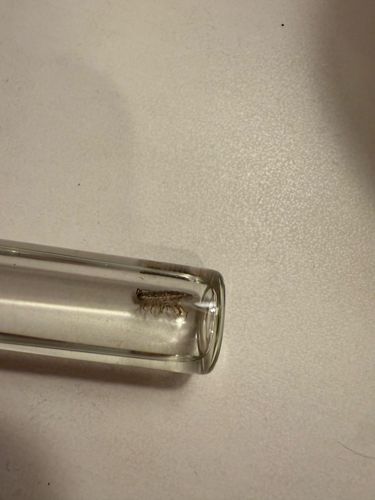Woodlouse (or Pillbug/Sowbug)
Scientific Name: Various species, commonly Porcellionides pruinosus or similar terrestrial isopods
Order & Family: Order Isopoda, Suborder Oniscidea (various families like Porcellionidae, Armadillidiidae)
Size: Typically 6 to 18 mm (0.24 to 0.71 inches) in length

Natural Habitat
Damp, dark places; under rocks, logs, leaf litter, decaying wood, garden debris, basements, and other sheltered areas. They require moisture to breathe.
Diet & Feeding
Detritivores, primarily feeding on decaying organic matter such as dead plants, fungi, and sometimes animal carcasses. They play a role in decomposition.
Behavior Patterns
Nocturnal; they are most active at night. They tend to aggregate in groups, especially in moist environments. Some species, like pillbugs, can roll into a ball (conglobate) when disturbed as a defense mechanism. They are terrestrial crustaceans, not insects, and breathe through gills that need to stay moist.
Risks & Benefits
Generally harmless to humans and pets. They can occasionally be considered a nuisance if found indoors in large numbers, indicating a moisture problem. Environmentally beneficial as decomposers, helping to recycle nutrients back into the soil and improve soil health.
Identified on: 10/21/2025